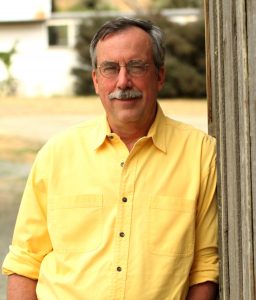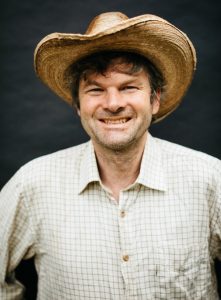

In the new book, The Great Regeneration: Ecological Agriculture, Open-Source Technology, and a Radical Vision of Hope, co-authors Dorn Cox and Courtney White explore the place where complex technologies and complex ecosystems meet. With today’s digital networks, sensors, and computational power, agrarians and land managers can now engage with a far larger community than ever before, and improve both their productive capacity and the health of land, water, and wildlife.
Dorn Cox is a farmer in New Hampshire on the family farm where he grew up. He’s research director for the Wolfe’s Neck Center for Agriculture and the Environment; he is a founder of the farmOS software platform and Farm Hack, and is active in the soil health movement.
Courtney White is a founder of the Quivira Coalition, where he served for many years as executive director. He’s author of many other books, including Grass, Soil, Hope, and the Age of Consequences.
Circuit board Photo by Mathew Schwartz on Unsplash
Aerial Photo by Ivan Bandura on Unsplash
2’46 what does “regeneration” mean?
4’58 how Dorn and Courtney each got into regenerative agriculture
10’18 agriculture a shared endeavor among farmers, ranchers, land stewards, scientists, and so many others
11’26 seeing excess carbon as a resource to be used to put back into living systems
12’11 damaged landscapes from overgrazing, plowing, and so many other factors worldwide
15’43 open source technology in agriculture
16’25 consolidating learning by sharing knowledge via technology
17’31 connecting by using stories that connect us to land and each other
19’52 technology can be used for good or ill
21’20 new tools allow us to model complex systems of both land and social systems
22’24 keeping data sovereignty and privacy
23’10 new vision of The Commons
26’29 OPEN TEAM — Open Technology Ecosystem for Agricultural Management
30’10 many kinds of tools from hammers to high tech
32’46 how this is like and unlike social networks and other Silicon Valley systems
34’11 the learning curve
36’00 how is knowledge curated so that it’s useful and accurate
39’38 how Dorn has been using these networks on his own farm
41’47 New England grain self-sufficiency is part of the history they’re trying to reclaim
45’18 agricultural land can be part of conservation, not just set-aside land
48’25 reframing conservation as stewardship
49’28 the role of corporations in making change–the greenwashing and the reality
51’37 scaling through collaboration, not just competition
53’38 a different vision of abundance



Subscribe:
Apple Podcasts
Spotify